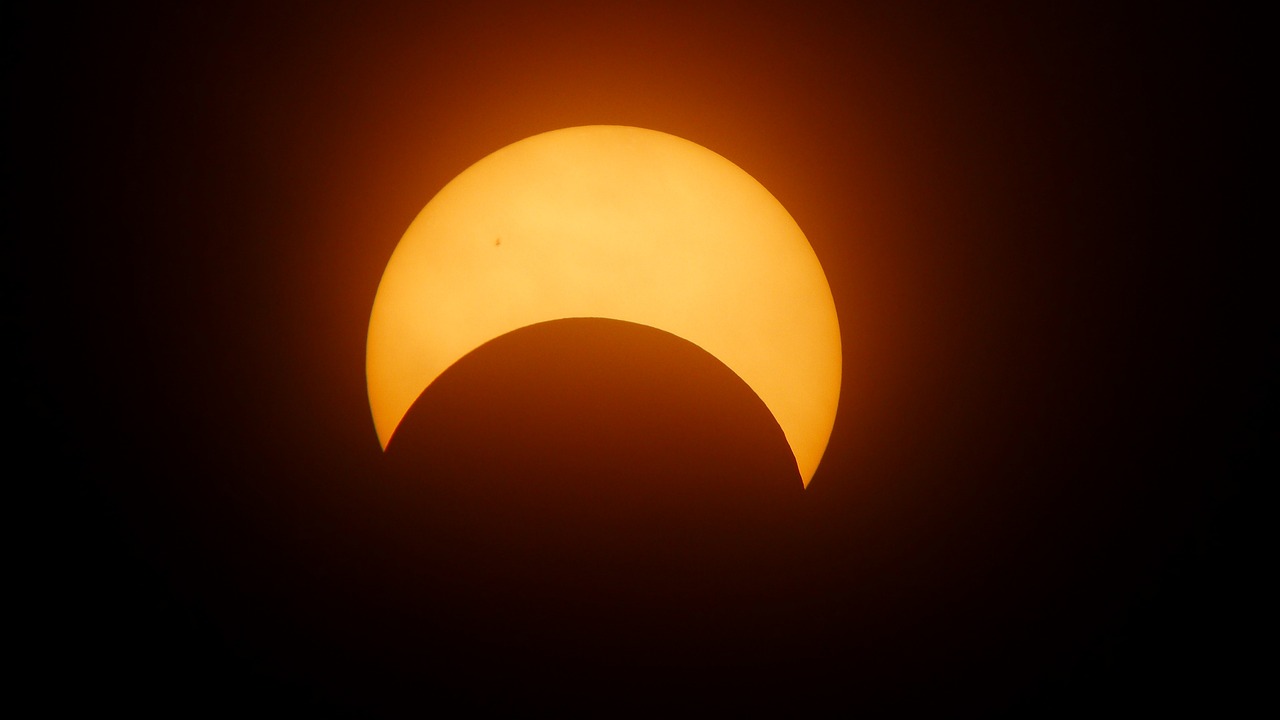April 8 promises to be an extraordinary day for Fort Worth residents–a day when the wonders of nature will leave us all breathless. The total solar eclipse promises to be an extraordinary experience.
In 1982, The Atlantic magazine published an essay by American poet and writer Annie Dillard about her experience viewing a total eclipse. Her quotes provide a sense of magnitude of the experience.
American Poet and Essayist Annie Dillard, “Solar Eclipse” from The Atlantic, 1982. Read additional excerpts via The Marginalian.
On the difference between a total and partial eclipse: “A partial eclipse is very interesting. It bears almost no relation to a total eclipse. Seeing a partial eclipse bears the same relation to seeing a total eclipse as kissing a man does to marrying him, or as flying in an airplane does to falling out of an airplane. Although the one experience precedes the other, it in no way prepares you for it.”
Tickets are still available to view the eclipse at the Garden and celebrate this once-in-a-lifetime event with friends, family and the entire community. In cooperation with the Fort Worth Museum of Science and History, we’ve planned a day of science, nature and fun, complete with activities for kids and adults, delicious food and clear views of the sky.
Members receive free admission to the event plus free glasses (while supplies last). Not yet a member? Join today! Members also receive free admission to the Fort Worth Museum of Science and History, and museum members receive free admission to the Garden.
Plan Your Visit
Area governments are warning traffic will be heavier than usual, so give yourself plenty of time to get to the Garden before totality (the moment when the sun becomes totally blocked) at 1:41 pm. Events will kick off at 10 am, but early birds can arrive as early as 8 am when the gates open; members as always are invited to early admission at 7 am.
Parking is free. As the main lots near the Garden Center fill up, guests will be directed to overflow parking.
On the end of the eclipse: “Less than two minutes later, when the sun emerged, the trailing edge of the shadow cone sped away. It coursed down our hill and raced eastward over the plain, faster than the eye could believe; it swept over the plain and dropped over the planet’s rim in a twinkling. It had clobbered us, and now it roared away. We blinked in the light It was as though an enormous, loping god in the sky had reached down and slapped the earth’s face.”
American Poet and Essayist Annie Dillard, “Solar Eclipse” from The Atlantic, 1982
If you would rather not worry about parking, consider taking Trinity Metro. The service is offering 50 percent off a Trinity Metro Local Day Pass on April 8. Read more and get the promo code.
Pack a blanket or lawn chairs, sunscreen, water bottles (refillable at multiple stations around the campus) and your eclipse glasses. Glasses will be available for purchase for $3, and members receive glasses for free (while supplies last.) Wear comfortable shoes and weather-appropriate clothing.
You are welcome to pack in food, although please be aware of our Picnic Etiquette. Snacks and meals will be available from several food trucks in the Garden and at the Museum of Science and History.
Guests can also preorder box lunches and picnic baskets from our on-site restaurant, Rock Springs Cafe. Meals from Rock Springs must be ordered at least 24 hours in advance.
Don’t want to participate in eclipse activities? Guests are invited to view the eclipse for free in the area between University Drive and the Garden Center.
Advancing Knowledge through Community Science
You won’t have time to get bored waiting for totality. Guests are welcome to explore the Garden, including the two on-going exhibits, Dinosaurs Around the World: The Great Outdoors and Seward Johnson Sculptures in the Garden. Butterflies in the Garden will also be open all day.
Lighthouse for the Blind will be on hand at the Garden on April 8 with a special opportunity for blind and visually impaired guests. They will be offering a LightSound device for all visually impaired attendees. The Lightsound devices utilize a technique called sonification, which is the process of converting data (or light intensity in this case) to sound, so that the visually impaired will also be able to experience the Total Solar Eclipse.
The Garden’s education team is organizing activities for kids and families to learn the science of the eclipse while having fun. In addition, the Research arm of the Garden invites adult guests to engage in some community science during the eclipse:
- Guests are invited to use the SunSketcher app from NASA to take photos during the eclipse. This will create a vast database of images that scientists will be able to use to map the sun.
- Guests are also invited to document the behavior of plants and animals during the eclipse using the app iNaturalist. Nature responds to the daily cycle of night and day, but a solar eclipse disrupts this pattern. Scientists will collect data from eclipse observers to try to better understand how the flora and fauna of the Garden react.
The Garden is also participating in two broader research programs:
- Garden staff will be recording the sound of the eclipse as part of NASA’s Eclipse Soundscapes project, designed to gather even more data about how life on earth reacts during a solar eclipse.
- Staff will also use GLOBE Eclipse, a special tool of the Globe Observer app, to document air temperature and clouds during an eclipse. This information will help scientists better understand how an eclipse affects atmospheric conditions.
Garden staff will report on the data they will collect on April 8 at a special Armchair Botany Forum on April 11 via Zoom.
Reserve your tickets today, and start planning for this incredible opportunity. We can’t wait to see you there.






